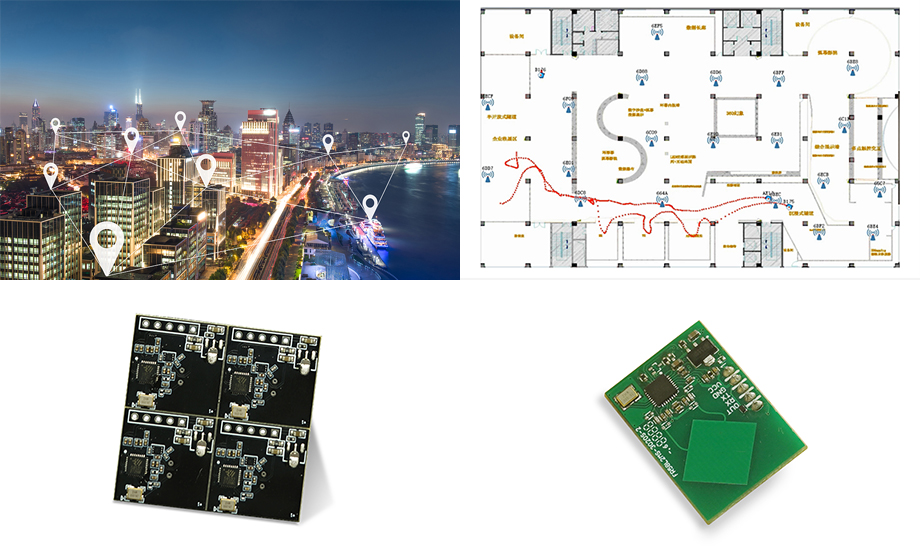Doppler radar sensor multi-target detection and high-precision speed measurement and positioning. With the development of society and economy, traffic accidents caused by illegal acts such as speeding emerge in an endless stream, and vehicle speeding supervision has attracted more and more attention. Multi-lane multi-target microwave speed radar, based on the advantages of single-lane narrow-wave speed radar, realizes accurate division of multiple lanes, effectively avoids the interference of adjacent lanes, and has superior product applicability and economy. One of the speed detection technical means.

Common traffic speed measurements use ground-sensing coils, Doppler radar sensors, and interval speed measurements to measure vehicle speed. Among them, the ground sense estimates the speed of the vehicle by calculating the time difference between the two coils, which has high accuracy, but the coil has a short working life and is inconvenient to layout; the speed of the traditional Doppler radar sensor is based on the Doppler reflection of the vehicle on the radar wave. The disadvantage is that it cannot detect multi-lane and multi-target vehicles at the same time, and is easily interfered by vehicles between adjacent lanes; interval speed measurement calculates the average speed based on the time required for the vehicle to pass a certain distance, the vehicle monitoring is sustainable, and the speed measurement accuracy is high , but it needs to be arranged at two intersections, and the cost is high.
At present, microwave radar is the most widely used traffic monitoring method on highways. To prevent interference when covering multiple lanes, traditional speed measurement radars mainly use narrow beam radars, also known as single-lane speed measurement radars. Due to its relatively narrow lobe angle (generally about 4.5°~6.5°), the effective measurement range of the radar only covers a single lane, effectively avoiding vehicle speed interference in adjacent lanes. In order to achieve multi-lane, multi-target detection, radar needs to be installed in each lane. This method is expensive and troublesome to install.
Based on the microwave radar system, the multi-lane multi-target speed measurement radar has been launched after years of intensive market application. The heavy upgrade of the Doppler radar sensor can effectively avoid the interference of adjacent lanes and realize the detection of multiple speeding vehicles in lanes 1 to 4.
1. Features of Doppler Radar Sensors
1. Not subject to light, bad weather and other factors
Currently, lane detection is a long-term research hotspot in intelligent transportation systems. Lane detection includes lane line detection. Detection of road boundaries and vehicle traversable areas. At present, vision-based detection technology is the most widely used because of the large amount of information obtained by the camera and the low cost. However, the photos taken by the camera are easily affected by the external environment such as light and weather, and the environmental conditions are strictly required, resulting in inaccurate results of the visual inspection technology.
In recent years, with the development of radar detection technology, since radar is not affected by environmental factors such as light and bad weather, it has the advantages of wide detection range and high ranging accuracy, and has been widely used to replace or assist cameras for lane detection.
2. Multi-lane division, judging that the vehicle belongs to the lane
For multi-target Doppler radar sensors, in addition to lane detection, it is also necessary to divide lanes, that is, to determine which lane the vehicle belongs to.
3. The location of the captured vehicle is highly consistent and the capture rate is high
Based on the Doppler principle, the radar detects the real-time speed of the target vehicle at the multi-lane trigger point, and detects the position of the target vehicle in real time. The lane information provides an accurate trigger signal for the capture camera, the trigger position accuracy is less than 1m, and the captured vehicle position is highly consistent. The catch rate is as high as 99%. In this way, the depth of field requirement for capturing the camera lens is reduced, the resolution of capturing the license plate is high, and the size of the license plate is consistent, which is greatly beneficial to the license plate recognition.
4. Simple installation, low operation and maintenance cost, good economy
A single radar covers multiple lanes and measures the target speed of multiple vehicles. Compared with the ground coil technology, it does not damage the road surface and affects the life of the road surface; compared with the traditional single-lane speed radar, it can greatly save the radar equipment and the corresponding installation, debugging and calibration work. The cost performance is obvious, and the economy and maintainability are better.
2. Installation method
There are generally two installation methods for multi-target radars: top-mounted and side-mounted. There are two main application scenarios:
1. Multi-lane bayonet speeding capture system
The multi-target speed radar is installed in the middle above the road. According to different road conditions, each radar can monitor 2-4 lanes, because the longitudinal angle of the radar is only 5.5°, the radar monitors multiple lanes, the radar detection area is small, the continuous vehicles are effectively distinguished, and the trigger position is accurate.
2. Doppler radar sensor roadside mobile electronic capture or fixed point speeding capture
The horizontal angle of the multi-lane multi-target radar is designed as a narrow beam of 5.5° to ensure the accurate trigger position, which can effectively distinguish consecutive vehicles and overcome the interference caused by multiple vehicles entering the beam range at the same time. A single Doppler radar sensor can cover multiple lanes through oblique illumination, distinguish between oncoming vehicles, thereby screening directions and illegally capturing reverse traffic.



